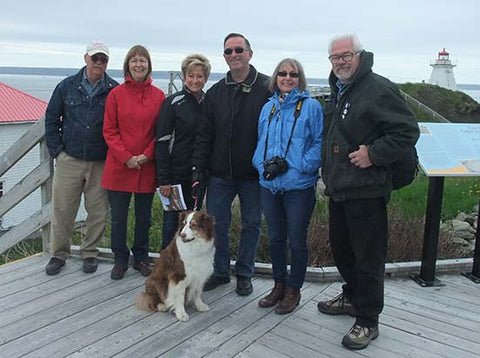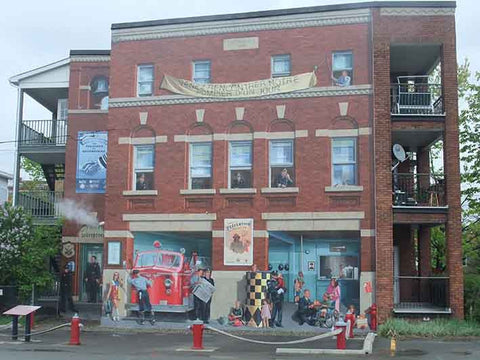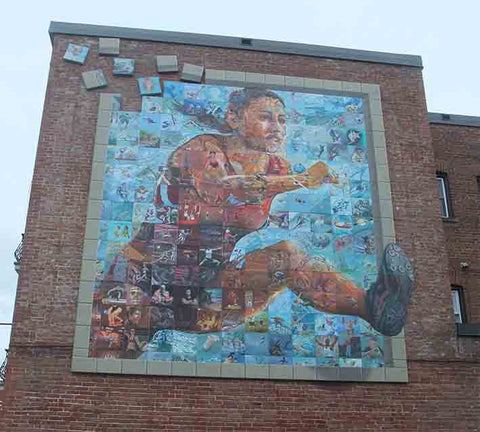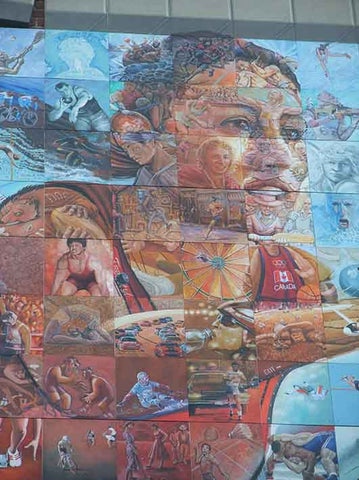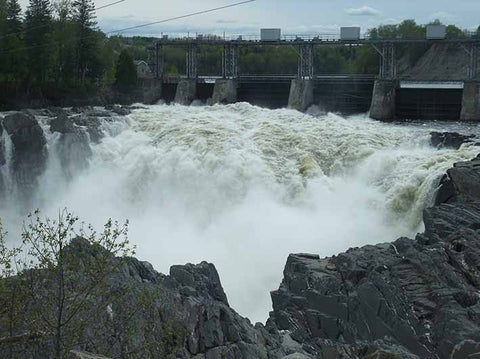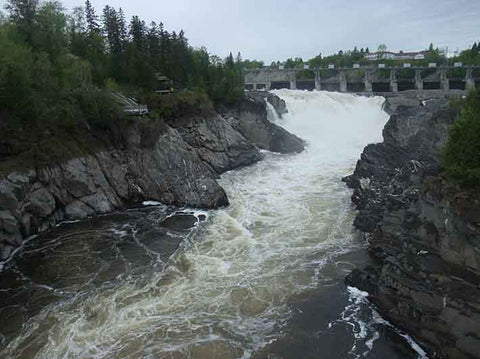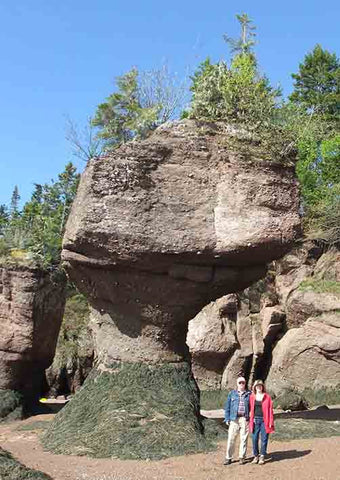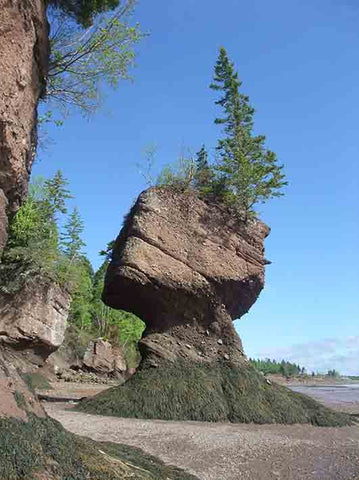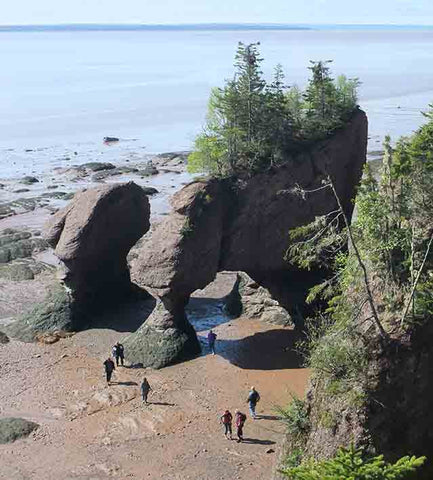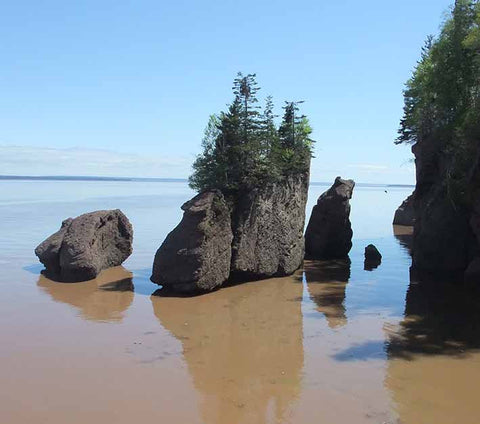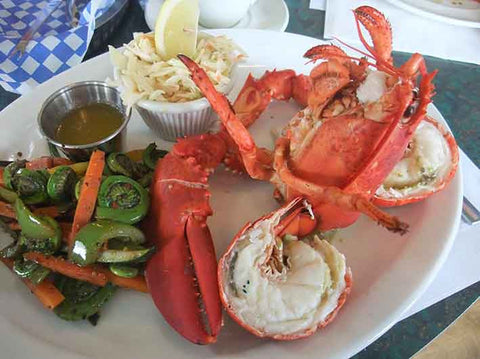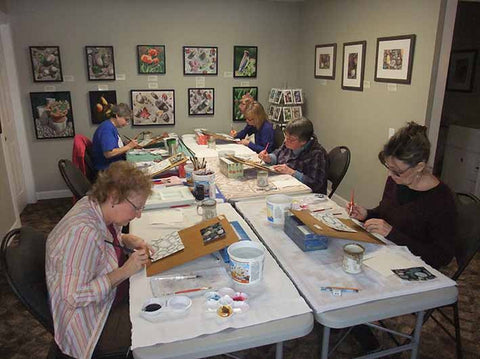
To celebrate our 40th wedding anniversary, John and I, with friends Rick and Nancy, embarked on a 3-day guided snowmobile adventure on Baffin Island, in Canada's far north. Our trip was on Easter weekend, to take advantage of the long hours of daylight and milder spring temperatures.

We flew via First Air on a Friday morning, from Ottawa to Iqualuit, the capital of the territory of Nunavut. After a 3-hour flight, this was our first view of the town from our airplane. We stayed at the big brown building at the top of the photo above.

Our guide from Arctic Kingdom picked us up at the airport, and we collected our snowmobiles. John and I are pictured above on our Arctic Kingdom Polar Expedition Grand Touring Skidoo.

We all went on a short test ride on the sea ice. The photo above shows John and I beside our Skidoo, with our friends in the background. Rick and Nancy each drove a Skidoo.

We saw lots of dogsled teams tied up near the shore. In the background are fuel storage tanks, that are refilled every summer from tanker ships, to provide fuel for the town of Iqualuit all year.

After an excellent dinner and comfortable overnight stay at the Frobisher Inn, we set off early Saturday morning across the sea ice of Frobisher Bay (shown above). This 20 km crossing took us over tortuous 2-meter pressure ridges near Iqualuit, then over smoother sea ice to the far shore of the Bay.

Our destination was the tiny village of Kimmirut on the other side of a large peninsula on Baffin Island, about 130 km away. The photo above shows the two traditional qamutik (pronounced KAMmatick) expedition sleds made of wood and twine, and five snowmobiles, that made the journey. We had to bring all our gas, personal luggage, safety equipment, camp stove, and food with us.

We followed tundra trails through more than 100 km of Katannilik Territorial Park, and along the Soper River valley. We enjoyed sunshine and blue sky all day, surrounded by glaciated mountains and pure white snow. The trail was busier than we had expected, and we saw about 50 snowmobiles that day, because there was a snowmobile race along the route we were taking.

Shelter cabins, like the one pictured above, were provided at intervals along the route to Kimmirut. Travelers use them to get out of the wind for a lunch break or even to sleep in overnight. The huts are very plain, with one window, one door, a chimney vent, and three raised platforms inside. Visitors have to provide their own heat source, such as a camp stove.

The photo above shows the inside of the cabin where we stopped for lunch. This is Wayne Broomfield, our unflappable, capable guide, boiling water and heating soup on a camp stove. We enjoyed homemade vegetable beef soup and biscuits, hot chocolate, and ham, cheddar, and lettuce wrap sandwiches for lunch. Delicious! Wayne grew up in northern Labrador and still spends time there. In addition to working as an expedition guide on Baffin Island, he is a professional photographer.

After lunch we prepared for a steep descent down a mountain pass. We left the second qamutik full of gas cans beside the trail, hidden behind a rocky ridge. Malaya Qaunirq Chapman, our guide's assistant, is shown in the photo above, sans qamutik. She was born in the Iqualuit area, spent several years in Los Angeles, and returned to live in the north. She was fully bilingual and a delightful addition to our group.

The photo above shows Malaya in full riding attire, Baffin Island style (i.e. parka and goggles rather than snowmobile suit and helmet).

We passed through the only 'forest' on Baffin Island – the Giant Willow Tree Forest. The trees reach 3 meters (10 feet) in height, although the ones we saw looked to be about 1 meter tall above the snow.

We reached Kimmirut by late afternoon and got settled in our rooms above the Kimik Co-op store.

This photo is our view of the harbour from the dining room above the Co-op. The tide is out, so the sea ice has subsided beside the iconic peninsula in the harbour.

We were served a wonderful dinner - homemade buns, shepherd's pie and poutine with cheese AND bacon. Good job we all had worked up a good appetite that day.

After dinner we walked around the village and visited the local museum to see their collection of traditional artifacts, tools, and clothing. We also saw this polar bear hide beside a house.

After hot showers and a good sleep, we embarked on our return journey on Sunday morning. The day was windy with some haze, but it was interesting to see the scenery under different weather conditions. The photo above shows our friends Rick and Nancy with our guide Wayne.

As the day progressed, the wind increased and visibility decreased, but Wayne guided us confidently through the route back to Iqualuit. We wore our sunglasses the whole trip, because the Arctic spring sun is very strong and can cause snow blindness.

We stopped to see this huge frozen waterfall on the Soper River. It was the same gorgeous aquamarine colour you see in glacier crevasses.

Our guide, Wayne, took the photo above. John and I are on the snowmobile on the left. Behind us are Malaya and three local women who joined our group when the weather worsened.

Wayne took this picture above. Rick and Nancy are in front, with John and I behind them. You could not tell where the land ended and the sky began - everything was white. But Wayne got us through and back to our hotel by late afternoon. Three of us ended up with a bit of frostbite on our necks, where the wind sneaked in between our jackets and helmets. Gotta have battle scars, right?

We returned our snowmobiles and qamutiks to the Arctic Kingdom office in Iqualuit (shown above). Afterwards, we had dinner at the Frobisher Inn, and Wayne entertained us with more enthralling tales of his Arctic adventures.
While we dined and talked, several local artisans came through the restaurant, offering their creations for sale. (This is an acceptable practice in the north.) It was wonderful to meet these Inuit folk, and it was a convenient and affordable way to acquire some quality paintings and carvings, as souvenirs of our visit to Baffin Island.

On Monday morning, Wayne picked us up from the Frobisher Inn, to give us a driving tour of town, before we flew back to Ottawa in the early afternoon. Above, we are pictured at the Arctic Kingdom office - John, Nancy, Wayne, Karen, and Rick - in front of four brand new qamutiks.

This is one of the residential streets in Iqualuit, above. Wayne told us house prices run in the $300K to $500K range and jobs are very well paid here.

This is one of their grocery stores, above. Groceries are more expensive here due to freight costs - goods have to be shipped in during summer when the sea ice is out, or flown in during the rest of the year.

Stop signs are tri-lingual in Iqualuit.

And, yes, there is a Tim Horton's here too... Now you have no excuse not to go to Baffin Island!
Subscribe to Karen's Newsletter if you wish to see more travel tales, studio news updates, or notices of upcoming painting classes and exhibitions.
SaveSaveSaveSaveSaveSaveSaveSaveSaveSaveSaveSaveSaveSave
SaveSaveSaveSaveSaveSaveSaveSaveSaveSaveSaveSaveSaveSaveSaveSave
